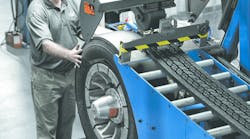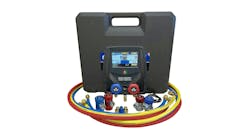Tire cost is a major reason why more than 85 percent of fleets retread today, say officials with Pressure Systems International (www.psitireinflation.com), manufacturer of the Meritor Tire Inflation System by PSI. Retreads are a third to half the cost of a new tire.
Because today’s commercial truck tires are designed to be retreaded multiple times, “protecting the investment in your casings is critical to reducing your tire budget and lowering cost per mile,” they note. Tire casings that are taken care of diligently should last a minimum of one retread and often two retreads in linehaul service. Tire casings in pickup and delivery service can expect up to three or four retreads.
PRESSURE
One of the best ways to maximize the retreadability of tires is to maintain proper tire inflation pressure because air is what carries the load.
PSI officials advise referring to published load inflation tables for the correct “cold” tire inflation pressure for a fleet’s worst case load scenario for a given axle and tire to determine the best inflation pressure.
The load inflation tables are based on a cold temperature of 70 degrees F, they note. Tire pressure will increase about 15 percent after running on the highway at 65 mph and fully loaded.
It can take a tire several hours to cool down after coming off the highway. Therefore, “it makes little sense to check air in a ‘hot’ tire, they point out. “The best time to check air pressure is during the morning driver walkaround when it will be the most accurate. Always utilize a calibrated tire pressure gauge when measuring tire pressures.”
CHIEF INGREDIENT
The major ingredient in commercial truck tires is natural rubber. If a tire is running underinflated, “the casing becomes significantly hotter because of a combination of the longer tire footprint – 18 percent more rubber on the road at 80 psi versus 100 psi – and the additional flexing of the sidewalls will heat up the natural rubber,” explain PSI officials. When the steel belt package reaches around 200 degrees F, the natural rubber based compounds inside the tire start will start reverting – decomposing due to excessive heat.
This is unnoticeable until the retreader rejects the casing for retreading, they point out, and “can be a major blow to the tire budget.”
Another tip for maximizing retreadability is to protect the casing from cuts and stone penetration by not running the tread down too low. This, PSI officials say, will make the casing more susceptible to damage.




